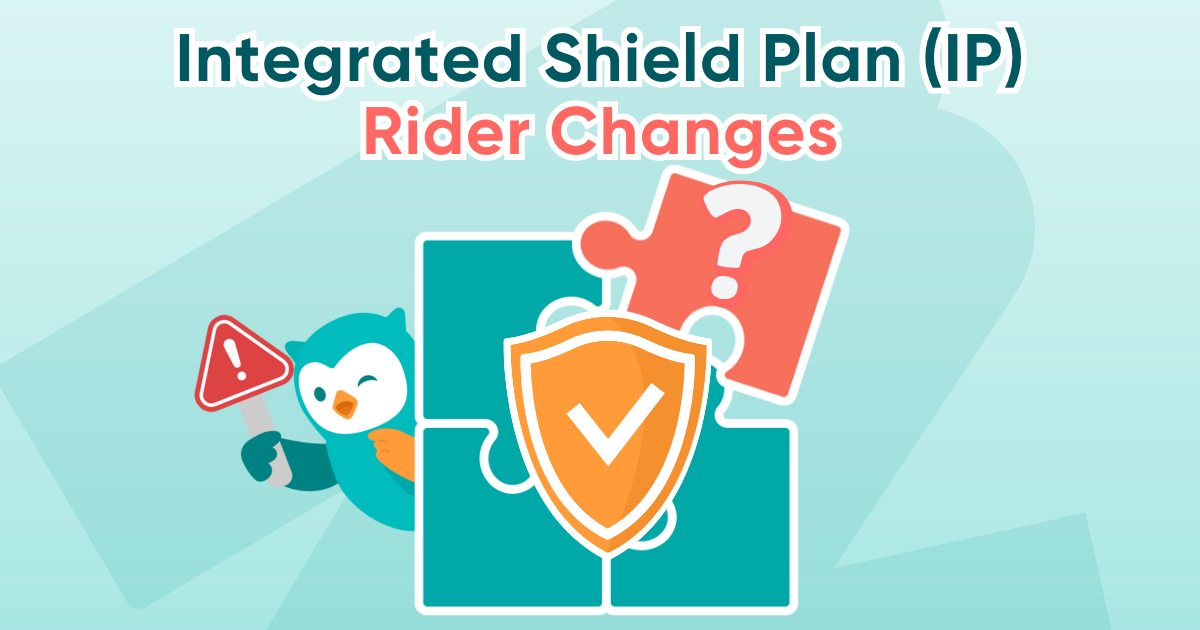Note: It was announced in November 2023 that MoneyOwl will be acquired by Temasek Trust to serve communities under a re-purposed model, and will move away from direct sale of financial products. The article is retained with original information relevant as at the date of the article only, and any mention of products or promotions is retained for reference purposes only.
______________
Singapore tops many rankings, but one ranking is far less desirable than the rest. Unfortunately, Singapore ranks 1st in the world for diabetes-induced kidney failure. We also need to manage the risk that one in 4 of us may develop cancer in our lifetime.
Fortunately, advancements in medical treatments and screening have greatly improved survival rates for people with critical illnesses such as cancer over the years.
However, these improved medical treatments come at a cost. According to the Mercer Marsh Benefits 2019 Medical Trends Around the World report, Singapore’s medical cost inflation rose 10%, ten times more than Singapore’s general inflation rate in 2018.
This means that you will need to be prepared to protect yourself against the risk of developing a critical illness, or more commonly known as CI, and that CI insurance should form a key pillar in your insurance planning.
What are CI insurance plans?
As the name suggests, a CI insurance pays out a lump sum of money upon a diagnosis of a CI. It could be a standalone plan, or as a rider attached to a term or whole life insurance.
Since 2003, the Life Insurance Association (LIA) has standardised the definition of 37 CIs to help consumers easily compare different CI insurance plans. The list includes major cancers, heart attacks of specified severity, stroke, kidney failure and paralysis, and is updated periodically to keep up with medical advances and reduce ambiguity.
This payout is meant to cover the loss of your income during your treatment and recovery period and help with a part of your medical expenses. While the national MediShield Life and Integrated Shield Plans (IPs) will cover most of your hospitalisation bill, there may be new treatments or alternative medicines which are not covered. Hence, the lump sum payout can help with these.
How much should CI insurance cover?
The Life Insurance Association of Singapore recommends a CI protection amount of about 4 times your annual income. But this amount may differ among individuals, depending on how much more you need for medical costs beyond the hospital insurance plans, the costs of alternative treatments, and what stage of CI you are covered for.
What types of CI insurance are available?
| Late CI Plan | Early CI Plan (also known as ECI) | Multi-Pay CI Plan |
|---|---|---|
| Provides lump sum payout when you contract one of the 37 CI at a relatively late stage. For example, you will receive the payout when you are diagnosed with stage 4 breast cancer. | With improved detection and screening procedures, this has led to the availability of early-stage critical illness plans, based on the insurer’s major illness definitions. Usually ECI also includes CIs at the intermediate stages. | A combination of early to late CI plan, plus the option for multiple claims. It covers you against the risk of relapse and lets you claim for multiple CI conditions, unlike a single-pay CI. You don’t have to worry about being uninsurable after making your first CI claim. |
The key differentiating factor for multi-pay CI plans is the option for multiple payouts and your continued coverage even if another new condition or relapse happens after your first claim. The trade-off is higher premiums. An example as below:
Comparing stand-alone Early CI and Multi-pay CI plans
We generated the premiums for an individual who is 25 years old based on a standard health and lowest occupational risk class below:
| Single-Pay CI Plan | Multi-Pay CI Plan |
|---|---|
| Singlife Comprehensive Critical Illness Early to Late CI = $100,000 once only | Singlife MultiPay Critical Illness Early CI = $100,000 Late CI = up to $300,000 Recurring CI = $150,000 |
| Annual Premium (covers age 25 to 75) $878 for male $858 for female | Annual Premium (covers age 25 to 75) $1,316 for male $1,416 for female |
Note: This is for illustration purposes only. Actual premium amounts may differ.
The two plans illustrate that while multi-pay CI plan premiums cost 50% more than the single-pay ECI plans, the coverage of the multi-pay plan for early to late CIs is 300% more and provides peace of mind that you continue to be covered even after your first CI diagnosis (150% more in this case).
There are several other multi-pay CI plans available in the market. When evaluating which plan is most suitable for you, you will need to look at factors such as the number of CI covered, payout amount for each stage, duration of coverage, premium cost and additional features such as waiting times between claims and waivers of premium for CI.
If I have a single-pay CI plan, should I switch to a multi-pay one?
If you had earlier bought a single-pay CI plan and are now considering whether to ‘upgrade’ to a multi-pay CI plan, you will need to check if you are subject to the same underwriting as when you bought your CI plan when you were younger, and possibly in better health. You will also need to consider your current income and dependants and if you need to update the coverage amount, as well as if there is any cash value in your earlier plan.
Let us help!
If you would like to explore buying or enhancing your CI coverage, feel free to reach out to us for an obligation-free consultation. We can help review your personal financial portfolio and evaluate if you have adequate protection. If you have insurance or protection gaps, we can help recommend what type of CI insurance is most suitable for you.
What’s more, we offer up to 50% first-year commission rebates for qualifying plans, so you get more value out of your insurance plans.
Disclaimer:
Whilst we have taken all reasonable care to ensure that the information contained in this article is not untrue or misleading at the time of publication, we cannot guarantee its accuracy or completeness. You should not act on it without first independently verifying its contents. Any opinion or estimate contained in this presentation is subject to change without notice.
The information contained herein does not have any regard to the specific investment objective(s), financial situation or the particular needs of any person. You may wish to seek advice from our client adviser before making any financial decision.




